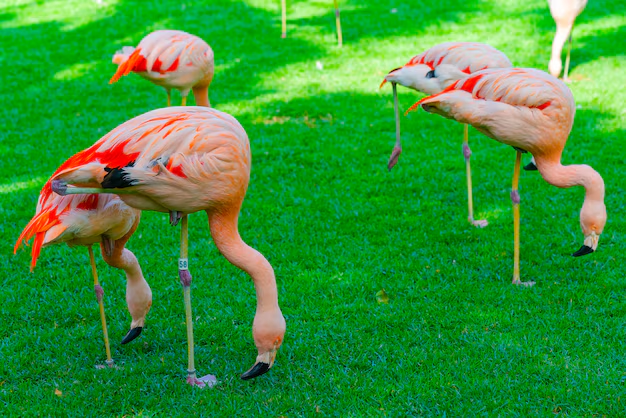Introduction: Unlikely Connections in Nature
At first glance, bees and marabou storks can also appear worlds aside. One is a tiny, industrious insect, even as the alternative is a large, scavenging hen. Despite their differences, those percentages are greater in commonplace than we would suppose. Although they no longer have a direct, mutual courting, each contributes extensively to the ecosystems they inhabit. By searching at how their roles overlap and influence the surroundings, we can uncover an exciting, indirect dating between bees and marabou storks.
The Marabou Stork: A Critical Scavenger
The marabou stork is one of nature’s only smooth-up crews. Known for its lengthy, gangly legs and naked, frequently unsettling neck, this fowl is a scavenger, feeding generally on useless animals, fish, or even discarded meals. Its function inside the ecosystem is crucial because it allows it to break down decomposing dependents, preventing the spread of disease and preserving cleanliness in its habitat.
Feeding Habits of the Marabou Stork
Marabou storks thrive on carrion. Whether it’s the remains of a bigger animal or discarded waste from human settlements, these birds are nicely prepared to devour decaying material. By consuming carrion, they help to prevent the buildup of harmful microorganisms and maintain the balance of their surroundings. The birds play a vital role in the meal chain using cleansing up areas wherein others might not assignment, and this in turn helps the fitness of surrounding species.
Habitat of the Marabou Stork
Found mainly in sub-Saharan Africa, marabou storks live in wetlands, savannas, and open landscapes close to water sources. These habitats are domestic to quite a few species, and the storks often acquire where food is plentiful—generally near water bodies or areas with a high awareness of animal carcasses. By scavenging those regions, marabou storks preserve the surroundings free from excess waste.
The Role of Bees in Ecosystems: Pollinators and More
Bees are small but rather critical creatures in the international ecology. These industrious bugs are maximum well-known for his or her function in pollination, but their effect on ecosystems goes a long way beyond this. Bees make sure that plant life can reproduce, which in turn helps entire meal webs and keeps ecosystems vibrant.
Pollination: The Heart of Ecosystem Reproduction
Bees are the primary pollinators of many flowers, moving pollen between flora as they gather nectar. This technique is crucial for the replica of flowering plant life. Without bees, the various results, seeds, and flowers that aid herbivores and, through extension, predators, would now not exist. This procedure also contributes to the overall biodiversity of the surroundings, ensuring that plant life and animals maintain to thrive.
Bees as Indicators of Ecosystem Health
Beyond pollination, bees are taken into consideration as one of the pleasant signs of environmental health. Because they are sensitive to habitat changes, pesticides, and weather shifts, bee populations mirror the general popularity of the environment. If bee numbers decline, it often signals broader environmental issues that may affect other species, including marabou storks, who depend upon the general health of the surroundings for survival.
The Indirect Relationship Between Bees and Marabou Storks
While bees and marabou storks don’t at once interact, their movements in the identical environment assist hold the balance of the surroundings. Both species make contributions to the vitality of the habitats they share, and their roles are intricately linked to maintaining the fitness of the surroundings.
Shared Habitats: Wetlands and Open Landscapes
Bees and marabou storks are normally found in equal kinds of habitats, which include wetlands, savannas, and regions near bodies of water. These areas are wealthy in biodiversity, supplying meals and shelter for a variety of species. Bees pollinate plant life, making sure vegetation flourishes in those regions. Meanwhile, marabou storks scavenge decaying count numbers assisting in preserving the cleanliness of those ecosystems. Both species depend upon the same environments to live to tell the tale, and their activities contribute to the overall fitness of those habitats.
Bees and the Plants Marabou Storks Depend On
While marabou storks are scavengers and do not immediately rely upon flora for food, the plants of their environment are regularly pollinated buying bees. These plants provide food for herbivores, which in turn guide carnivores and scavengers like the marabou stork. By pollinating flora, bees make sure that the meal chain stays intact, in a roundabout way helping the storks by preserving biodiversity. If the plants don’t reproduce, the Whole Meals’ internet may want to fall apart, and the storks might lose access to the animals they feed on.
Decomposing Matter and the Role of Insects
Marabou storks are interested in regions with decomposing remember, which are frequently teeming with bugs. While bees aren’t commonly attracted to decaying flesh, they do pollinate the plants around those areas, assisting insect populations that would also feed on decaying natural fabric. In this manner, the bugs that bees assist may offer food sources for marabou storks, similarly connecting the jobs of the two species in retaining ecological stability.
The Importance of Ecosystem Health: Bees and Marabou Storks Together
The relationship between bees and marabou storks demonstrates how exclusive species can make contributions to the health of an ecosystem in complementary ways. While their direct interactions are few, their movements play pivotal roles in ensuring the sustainability of their habitats. Together, bees and marabou storks help keep a balanced atmosphere wherein plant life, insect populations, and scavengers can thrive.
Supporting Biodiversity and Ecosystem Balance
Marabou storks’ scavenging behavior and bees’ pollination activities each aid biodiversity in distinctive ways. As bees pollinate flowers, they help maintain the plants that feed herbivores, which in turn nourish carnivores like marabou storks. Similarly, as marabou storks consume decaying matter, they save you the unfold of ailment and hold the cleanliness of the environment, which benefits all species. These intertwined roles are important for environmental balance.
Conservation Efforts for Both Species
To protect bees, marabou storks, and limitless different species, it’s critical to maintain the habitats they depend on. Conservation efforts that focus on wetland safety, reducing pesticide use, and mitigating the consequences of climate exchange will ensure that each bee and marabou sstorkcan hold toon play their roles within the environment. By safeguarding those habitats, we shield the sensitive stability that allows those species to thrive.
Conclusion: Nature’s Subtle Connections
The dating among bees and marabou storks, whilst oblique, exemplifies the interconnectedness of all residing things. Both species, even though massively one-of-a-kind, assist to assist the delicate balance in their shared ecosystems. Bees preserve vegetation via pollination, which helps the food chain, at the same time marabou storks play their part in retaining the surroundings clean using scavenging. By knowing how even unrelated species can paint together through their roles in nature, we gain a deeper appreciation for the complexity of the herbal international.











